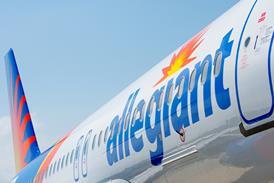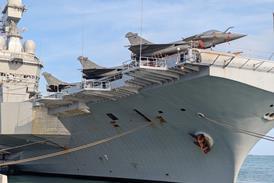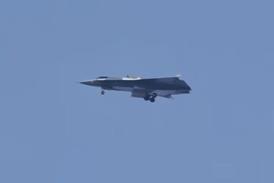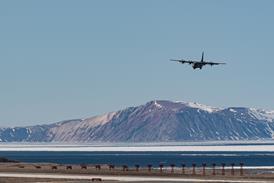UK air navigation services provider NATS has shelved plans to test "time-based separation" or wake turbulence procedures for aircraft landing at London Heathrow, which it believes would increase runway capacity.
The decision comes amid an expected government green light to introduce "mixed-mode" operation of the airport's parallel runways whereby take-offs and landings could occur on both of Heathrow's two runways simultaneously.
Currently one runway is used for take-offs and the other for landings, and these are switched over at specific times each day.
|
|---|
London's Heathrow airport commonly operates at 98% of its capacity |
The anticipated benefit of wake vortex monitoring trials would be the validation of time-based separation procedures for landing aircraft, which could increase runway capacity in specific weather conditions compared with the current distance-based separation method.
"A decision on lidar trials at Heathrow should await the outcome of the government's forthcoming consultation on mixed-mode operations, which will help determine any potential future benefits to be gained from [time-based separation] introduction," says NATS.
Mixed-mode operation would make wake-turbulence separation less of an issue if landings are interspersed with take-offs on a given runway.
NATS, in association with Eurocontrol, the European organisation advocating the safety of air navigation and the worldwide Wakenet research and development programme, had planned to carry out lidar wake vortex measurement trials from 2008.
"Although an early Eurocontrol study showed that lidar trials at Heathrow could help to release up to 26,000 additional runway slots by moving to time-based separation, subsequent more detailed research has shown a much smaller potential benefit of only one or two 'opportunity slots' per hour - nothing that could be scheduled with the certainty that airlines require," says NATS.
The lack of certainty stems partly from the fact that time-based separation benefits depend on wind strength and direction relative to the runways, causing wakes to be displaced from the flight paths of following aircraft.
Planning for realisable time-based separation benefits would, therefore, depend heavily on the accuracy of meteorological seasonal statistics and forecasting.
Meanwhile, with improved airport performance enhancement in mind, Heathrow's owner BAA and NATS announced a timetable for implementing airport collaborative decision-making, a system for coordinating operations at the airport with greater precision.
NATS has developed a tool designed to enable a web-linked network of airport users to coordinate their operations via desktop computers.
The potential benefits, according to NATS, include shorter taxi and holding times on the ground, more precise information about each aircraft's arrival time delivered further in advance, thus enabling coordination of gate resources to eliminate waiting and to speed up turnarounds.
The net result would be to reduce time wastage, fuel used, pollution and noise, says NATS. The first phase of airport collaborative decision-making at Heathrow is planned to be introduced "in the winter of 2007-8", says the company.
| WHAT IS MIXED-MODE? |
|---|
| Mixed-mode operation involves the use of both runways for take-off and landing, rather than the present system under which one is used for take-offs and the other for landings, a method adopted for local noise alleviation reasons. Mixed-mode operation is seen not only as a way of increasing the number of flights Heathrow can handle, but also of improving the airport's operational resilience. This is easily compromised because, being at about 98% of its capacity under present operating arrangements, any disruption caused by weather, security or an operational incident tends to result in flight cancellations because there is no slack in the system to allow for recovery. A prime aim at Heathrow, says NATS, is "landing-rate resilience", and additional flexibility in the use of runway capacity could aid it. |
Source: Flight International
























